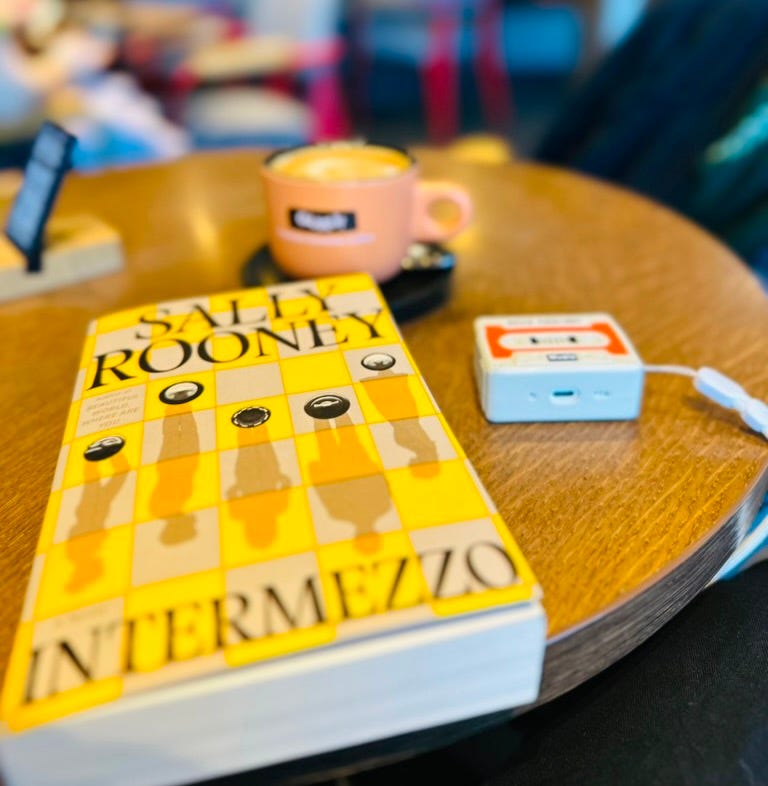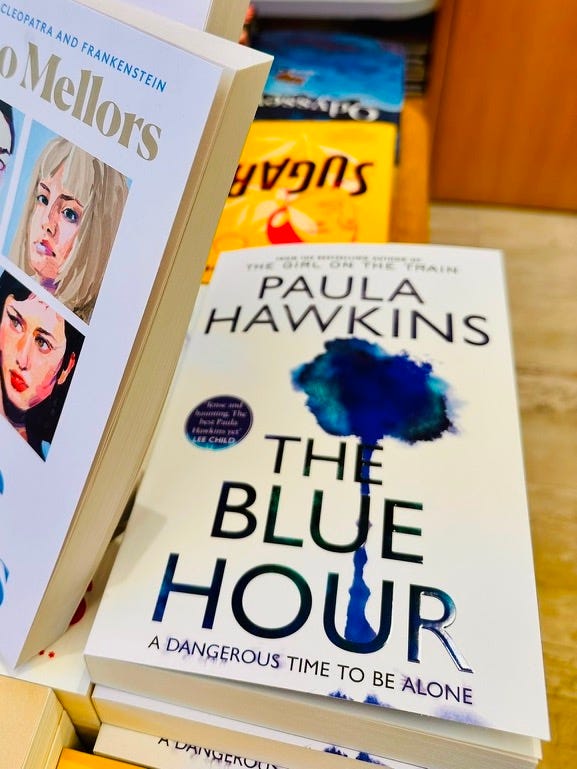Intermezzo, The Blue Hour, Yellowface
Sally Rooney's no-nonsense writing, our next read and Yellowface becomes a TV series
Hello and happy Sunday!
I’ve begun reading Intermezzo by Sally Rooney, and I’m thoroughly enjoying it! In the past, I was pretty particular about literary form. I used to get irritated when people deviated too much from punctuation and writing conventions.
Sally Rooney, a writer known for her unique style, doesn’t use inverted commas for dialogues. Sometimes, she doesn’t even start a new paragraph. Initially, I found this approach frustrating when I read her first novel. However, I’m amazed by how the text flows effortlessly. Despite the lack of punctuation, I know when dialogues begin and who’s speaking. This technique creates a more natural and intimate reading experience. Sometimes, the words spoken or thought aren’t explicitly stated as such, but I can still discern which are thoughts and which are spoken, and feel as though I’m in the character’s skin, uttering or thinking their words.
Here is one example:
Peter looks up at him, exhausted, head beginning to ache. Sylvia, he says. Yeah. Gary gives a kind of understanding nod of his head and, unbelievably, says nothing, does not appear to feel the need to say anything. Peter in silence stares at him for a time, holding awkwardly his satchel in his lap, and finally saying: What do you think I should do?
Sally Rooney, Intermezzo (p 314)
The text is also highly sensorial: the visual, auditory, gustatory, and olfactory senses are all very well done.
Artificial bell of the tram passing. Sick feeling, his reflection flashing and vanishing in the darkened windows of the carriage beside, one hand in his pocket clutching his phone to feel in case it vibrates. (p 276)
Reaching at last the door of her building he fumbles with the keys, ascends two at a time the familiar staircase. Painted walls marked by trailing bike handles. (p 278)
She seems to swallow, wet sound, weight of her head against his chest. (p 281)
Disorientated feeling, as though his centre of gravity disturbed, walls shifting: like passing out, he thinks. (p 286)
Lifts her fingers from the steering wheel in a final salute as Anna stands with her arms crossed in the rain, watching. Crunch of the wheels over gravel. (p 297)
Back at the table with a glass in his hand, cold, the fresh wet taste faintly savoury in his mouth, he experiences a moment of peace in which nothing of significance seems to be wrong with his life after all. (p 309)
Sally Rooney is the most representative of the new generation of fiction writers; her books are peppered with strained interpersonal relationships, characters with volatile mental health, slivers of life, and a concise and precise depiction of life in the first quarter of the 21st century. I find her literature refreshing, efficient, and reliable. Words are never in excess; they are presented like dots laid out for the reader to join. I like the teamwork: her writing is only effective if I put in the work myself. But it is so rewarding when it works.
Reading her feels as creative as her writing.
Our next book, The Blue Hour by Paula Hawkins
We rarely read crime fiction. We got carried away with the spooky season and decided it was the right time to try another one.
I thought I had read all the previous books Paula Hawkins published, but I missed the previous one from 2022 called Blind Spot.
This time, we decided to dive into her latest book, which has an official publication date of October 29th. While I was casually browsing through the new section at the local bookstore, I found it on display, among other blue-themed covers and titles.
Both The Blue Hour and Blind Spot seem to have quite a low rating compared to what I am used to selecting to read these days (less than 3.5 stars). When The Girl on the Train came out, it took the audiences by storm because of the innovative choice of the most unreliable narrator: an alcoholic woman who witnesses a crime (or does she?) whom no one believes.
As we have seen with Elif Shafak, if authors come up with unique ideas for their points of view or narrators, it’s quite hard to keep up with the expectations they create once they publish a new book. They can’t use the same trick because it would be repetitive. They may come up with a new idea, but it will never be as impactful as that first one.
I suspect that this is what happened with Paula Hawkins here. I’m excited to try out this book and be reminded of the elements that made The Girl On The Train enjoyable!
Yellowface by R. F. Kuang Is Being Turned Into A TV Series
Another book I missed all the hype of is Yellowface by R.F. Kuang.
That famous magazine, Country & Town House is reporting that the novel will be turned into a TV series.
What Is Yellowface About?
Yellowface centres on June Hayward, an author who is struggling to land a hit novel. June was supposed to be a twin rising star with her college friend Athena Liu, an Asian-American novelist moving from strength to strength in the publishing world. June can’t help her resentment. So when Athena dies in a sudden freak accident, June acts on impulse and snags her just-finished manuscript – an experimental masterpiece chronicling the unsung contributions of Chinese labourers during WWI. She’ll just edit the novel, June tells herself. But then she sends it to her editor, who loves it. Newly styled as Juniper Song, thus begins June’s skyrocketing career – but how long can she keep up the ruse?








